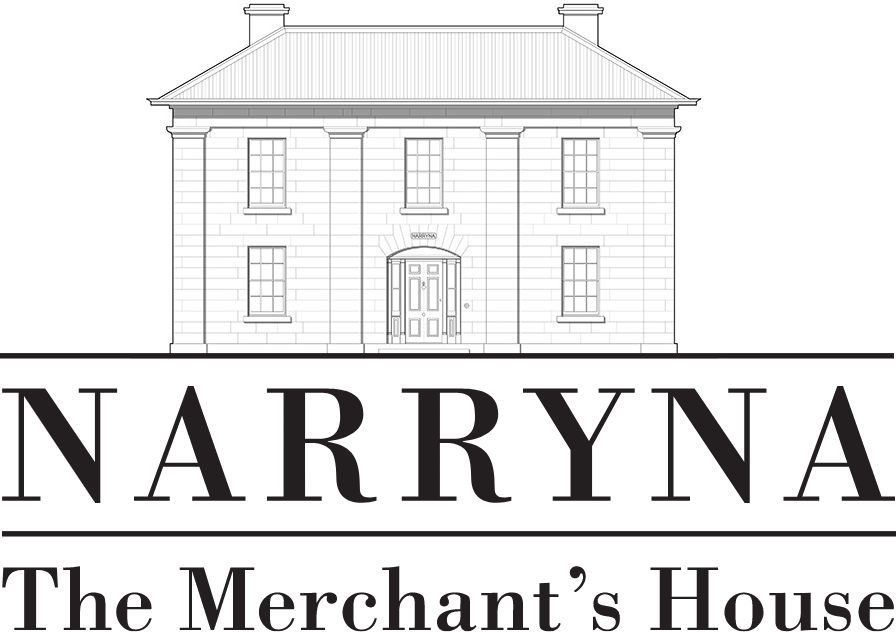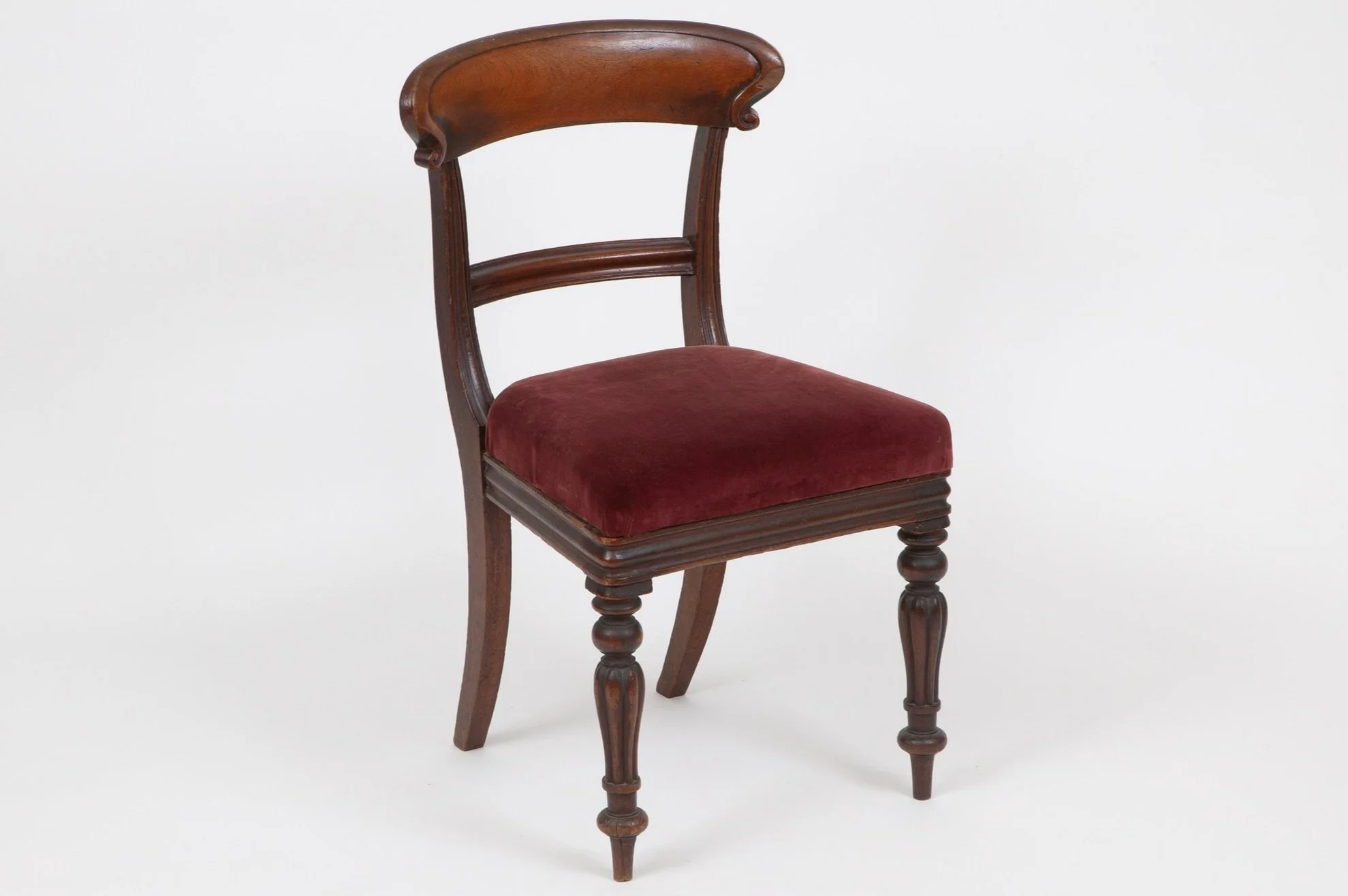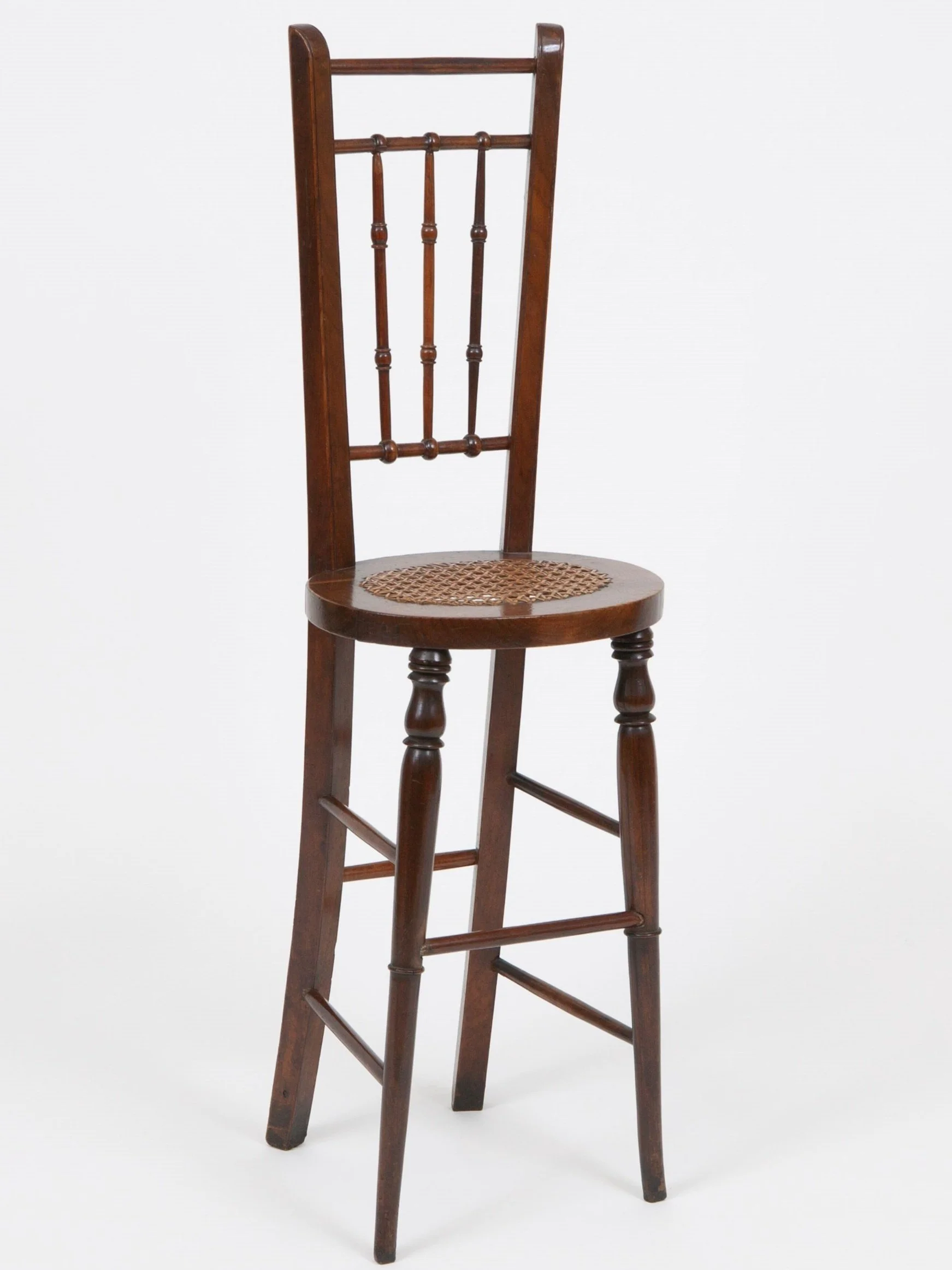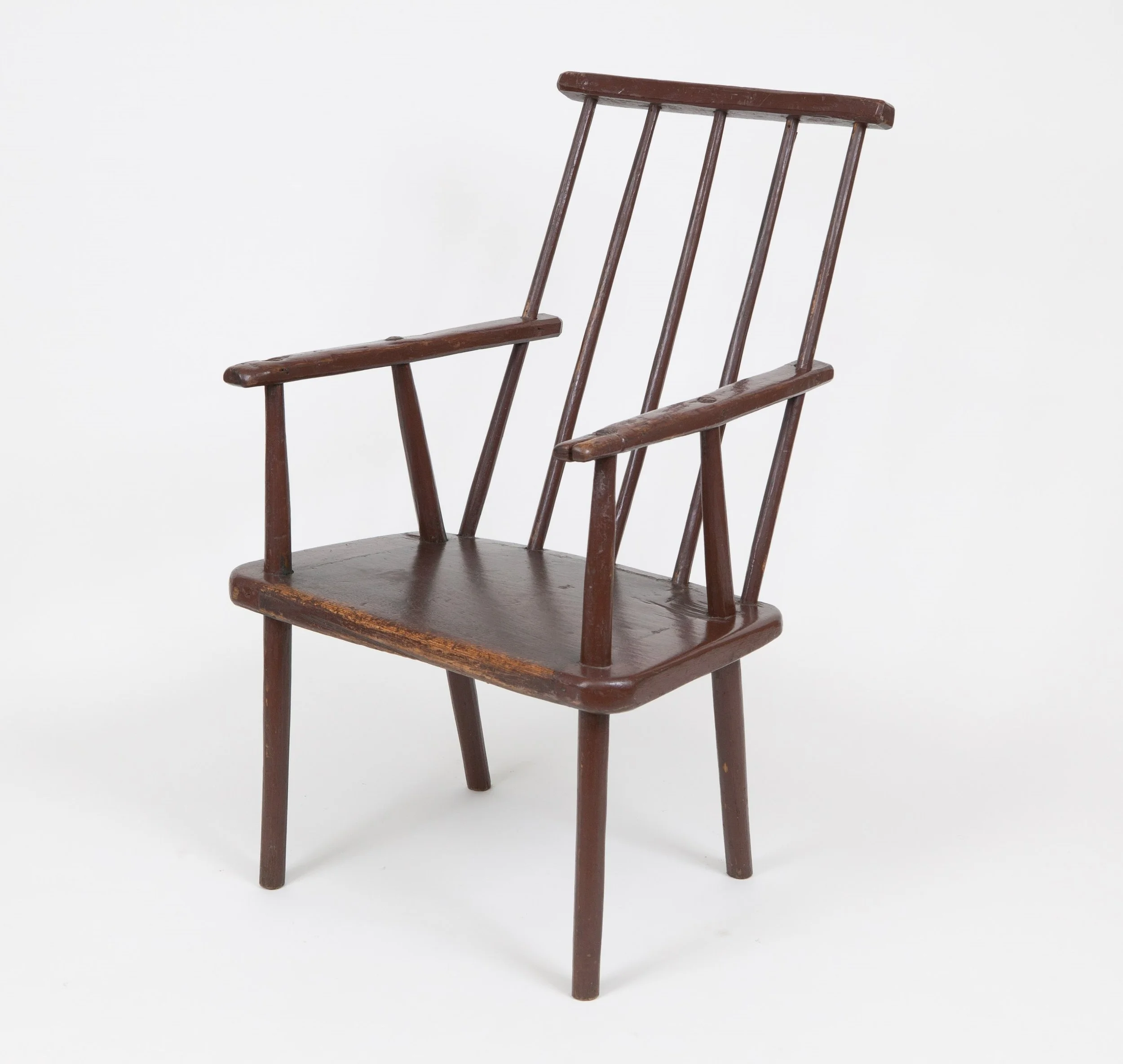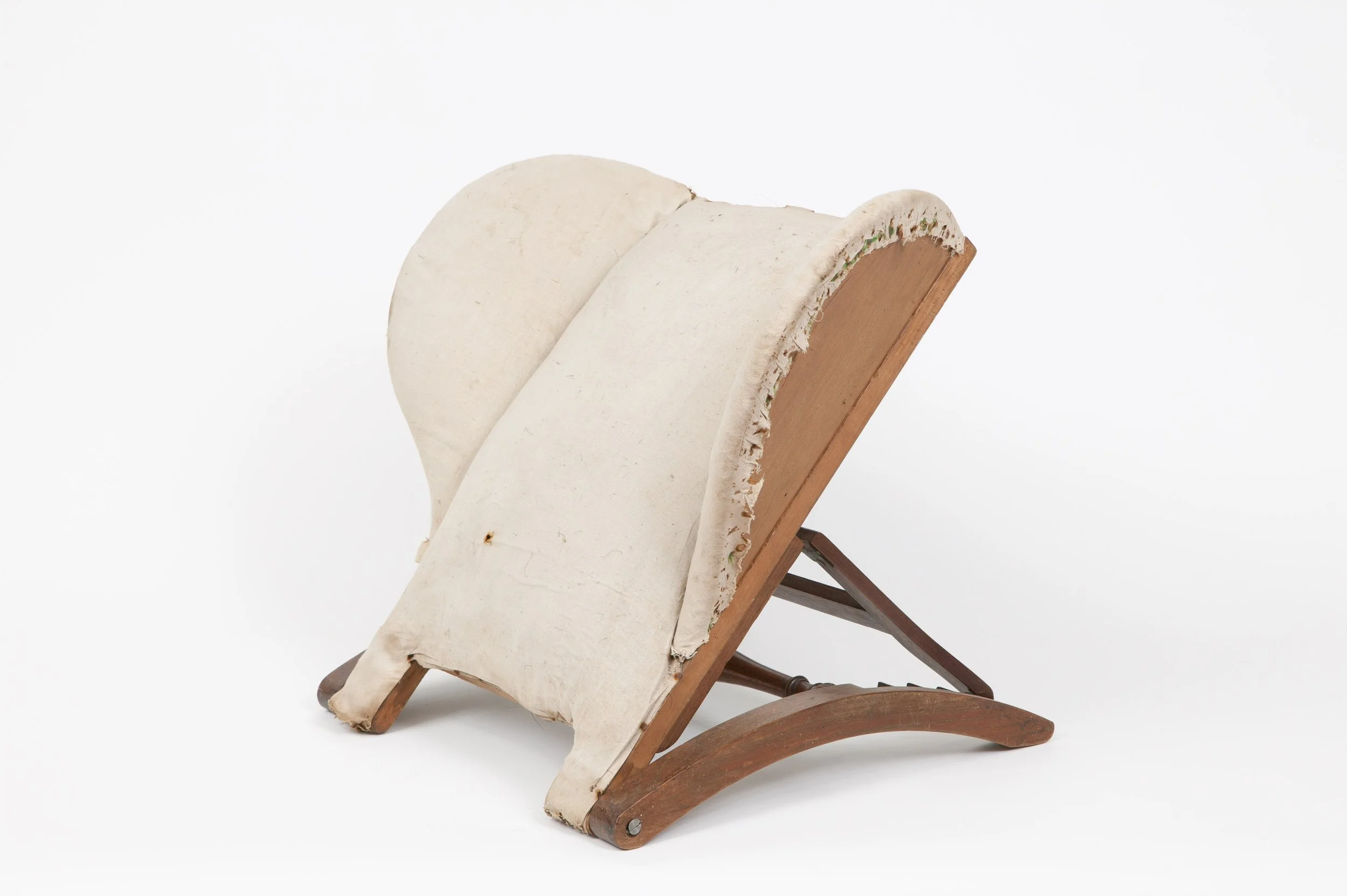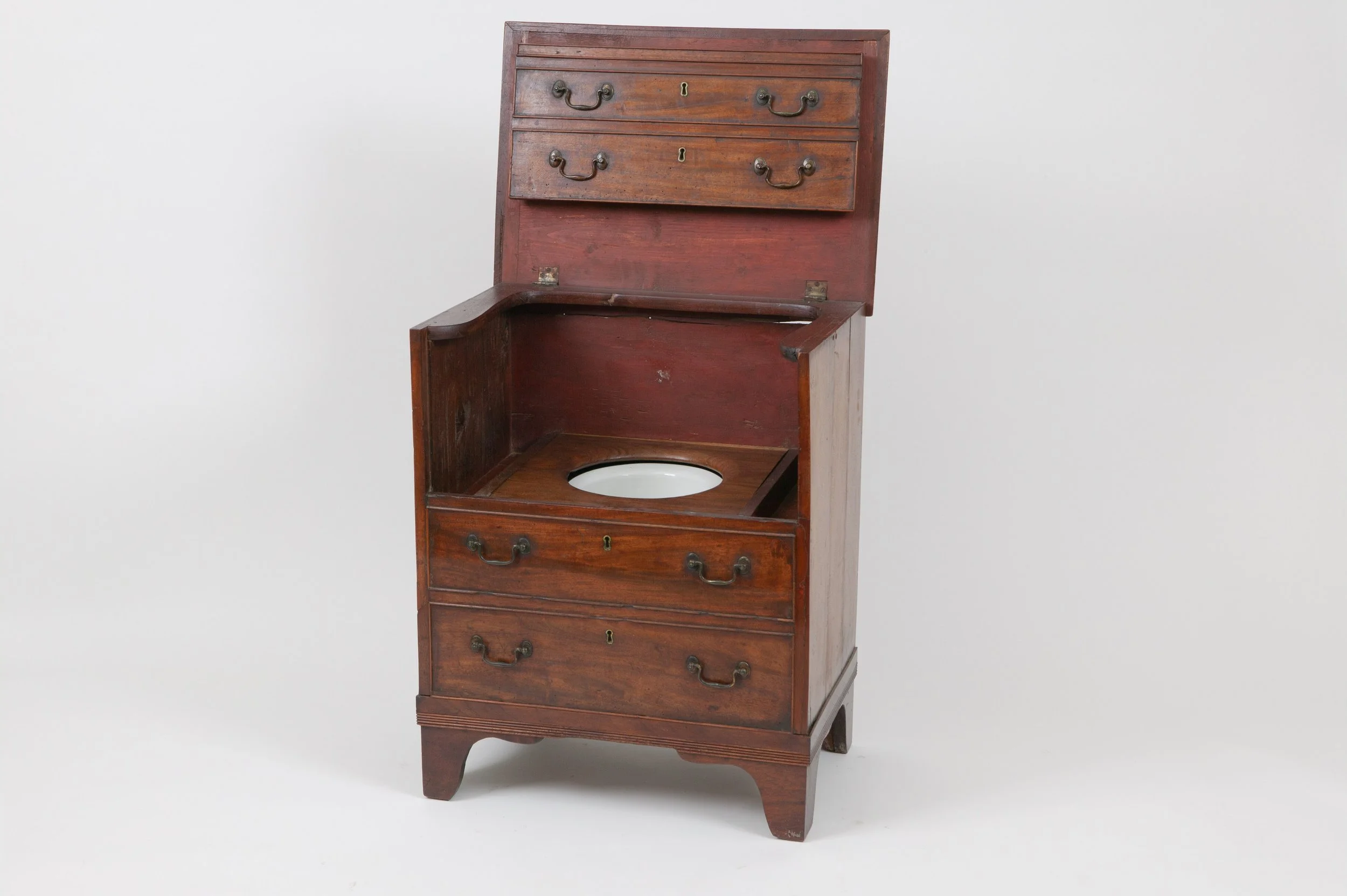NarrynA
Our Collections
Chairs
Narryna has a rich collection of Tasmanian-made and Tasmanian-used chairs. With different types used in different rooms, it’s time to explore Narryna’s social history through them.
Sidechair c1845 (dining room)
Australian red cedar (Toona ciliata)
This chair was once part of a large set of 20 to 24 dining chairs. Other matching chairs in Narryna’s dining room are mahogany and it is likely that the original English-made set was extended with copies in local cedar.
Captain Kelly’s Windsor chair c1750 (upper hall)
English elm seat and ash, early painted finish
Captain James Kelly (1791-1859) and the Beattie collection
Captain James Kelly, whaler and sealer, is best known for his circumnavigation of Tasmania in 1815-16 during which he named Port Davey and was the first European to enter Macquarie Harbour. He was later pilot and habourmaster for Hobart. Kelly Street and Kelly’s Steps (leading down from Battery Point to Salamanca Place) is named for him. This early Windsor chair captures a sense of his height and girth.
Rocking chair c1845 (breakfast room)
Australian red cedar (Toona ciliata), later upholstery
A typically Tasmanian pattern of rocking chair made even more comfortable by the addition of plump upholstery.
High chair c1840 (nursery)
Australian red cedar (Toona ciliata), later upholstery
This child’s high chair, used in the dining room or nursery, has details such as the drop-in seat and front leg turning that are typical of standard 1840s dining chairs.
Armchair c1825 (kitchen)
Unidentified Eucalypt, later pine seat
While sitting in Narryna’s kitchen, this carver chair may have been intended originally for a more formal setting. Its detailing, particularly the morticing of its backrails into the uprights, is typical of English chairmaking of c1800.
Sidechair c1835 (drawing room)
Huon Pine (Lagarostrobos franklinii)
Tasmanian Museum and Art Gallery, MONA State collection, collected by George Burrows
Drawing rooms were considered feminine domains and thus decorated in a ‘feminine’ style with light-coloured timbers. Huon pine was regarded as the colonial equivalent of satinwood, fashionable in London during the 1770s – 1850s period. Narryna’s drawing room is the setting for Huon pine pieces including this set of four sidechairs modelled on designs by the English firm, Gillows of Lancaster and London.
Sidechair c1840 (Guest bedroom)
Australian red cedar (Toona ciliata)
This sidechair with its tablet back is typical of the classically-inspired styles, regarded as modern in mid-19th century interiors.
Tasmanian Museum and Art Gallery, Henry Baldwin bequest
Prie-Dieu (or prayer) chair c1870 (Guest bedroom)
Huon Pine (Lagarostrobos franklinii) upholstered, with Berlin woolwork panels
Prie-Dieu (or prayer) chairs were designed for kneeling on while saying prayers, hence their low ‘seats’ (kneelers) and high backs with upholstered top rails. They were both vehicles for devotion and needlework.
Posture chair c1860 (nursery)
Tasmanian blackwood (Acacia melanoxylon)
This type of chair was designed by Sir Astley Cooper (1768-1841) to improve the deportment of young children. Used as a punishment, the small seat, high legs and straight back forced the child to either sit upright or to topple off. Good deportment was seen as a sign of good breeding.
Donated by Miss Violet Mace (1890-1968), who was a descendant of the Meredith and Mace families of Swansea on Tasmania’s east coast
Hall chair c1830 (entrance hall)
Australian red cedar (Toona ciliata)
Hall chairs were part of the architectural treatment of halls. They were not really meant to be sat upon so had timber seats and relatively upright backs which were often vehicles or woodcarving, in this case in the picturesque Gothic style.
Tasmanian Museum and Art Gallery, Henry Baldwin bequest
Jimmy Possum chair c1880 (kitchen)
Eucalypts (unidentified)
The Jimmy Possum chair is the archetypal Tasmanian vernacular chair. Named for the mythical Jimmy Possum, more recent scholarship tends to associate the veranda chairs with the Larcombe family of Deloraine in the state’s north. The chair’s rigidity was assisted by the front legs passing through the seat to support the arms. Jimmy Possum chairs were painted and both of Narryna’s examples retain painted finishes.
Bed chair c1840 (Huon Pine bedroom)
Australian red cedar (Toona ciliata), Tasmanian blackwood (Acacia melanoxylon) and upholstery
Bed chairs assisted invalids to sit up in bed for meals, reading and other daytime activities.
Commode (Captain Haig’s dressing room)
Mahogany
Not Tasmanian-made but part of George Meredith’s cabin furniture from his voyage to Tasmania on the Emerald, 1821. George Meredith (1777-1856) became a major landholder at Cambria, Swansea on Tasmania’s east coast. In an act of concealment, what appears to be a miniature chest of drawers opens to reveal a commode.
